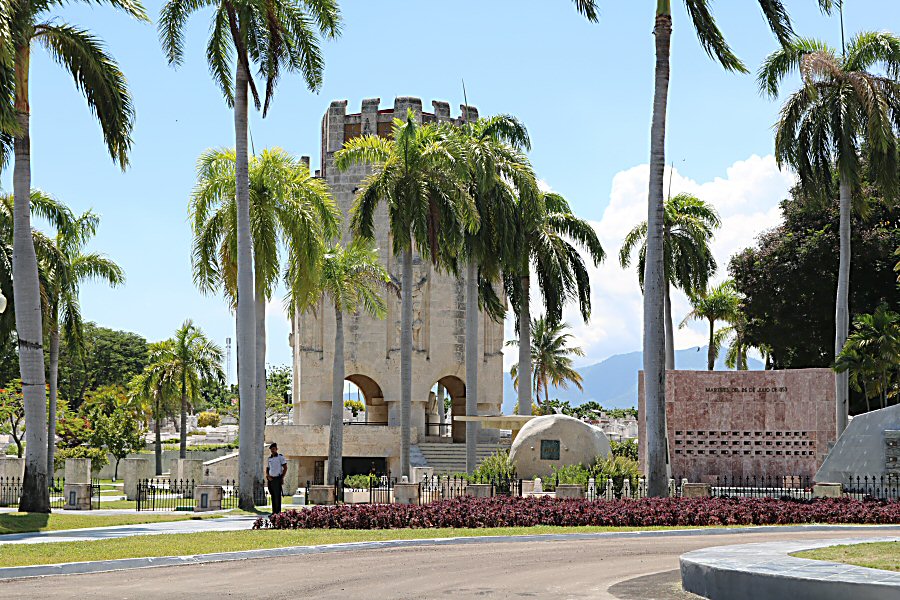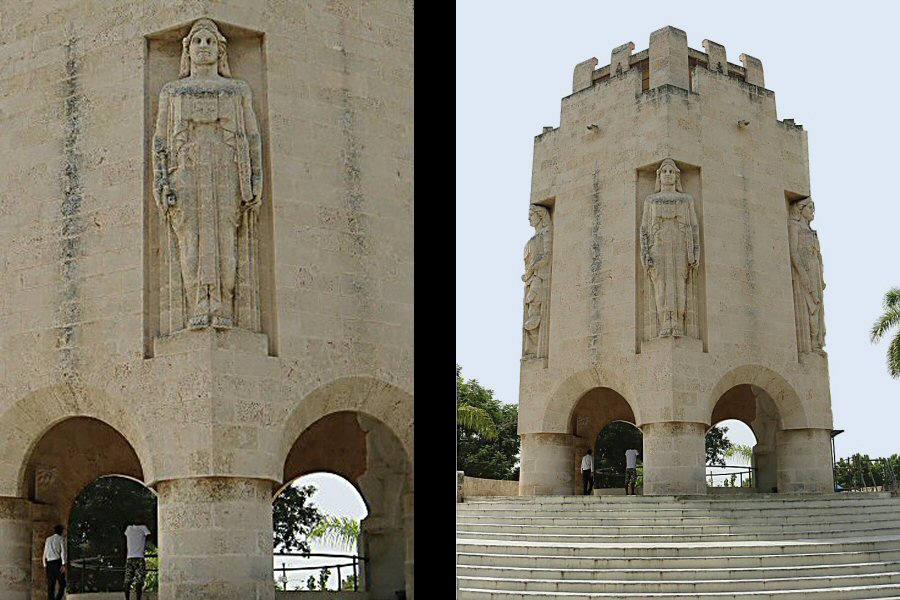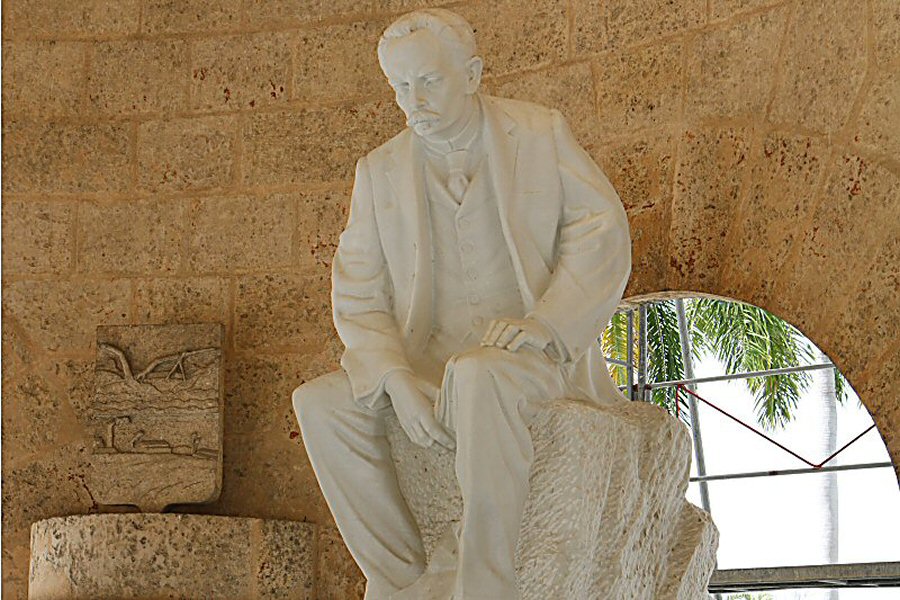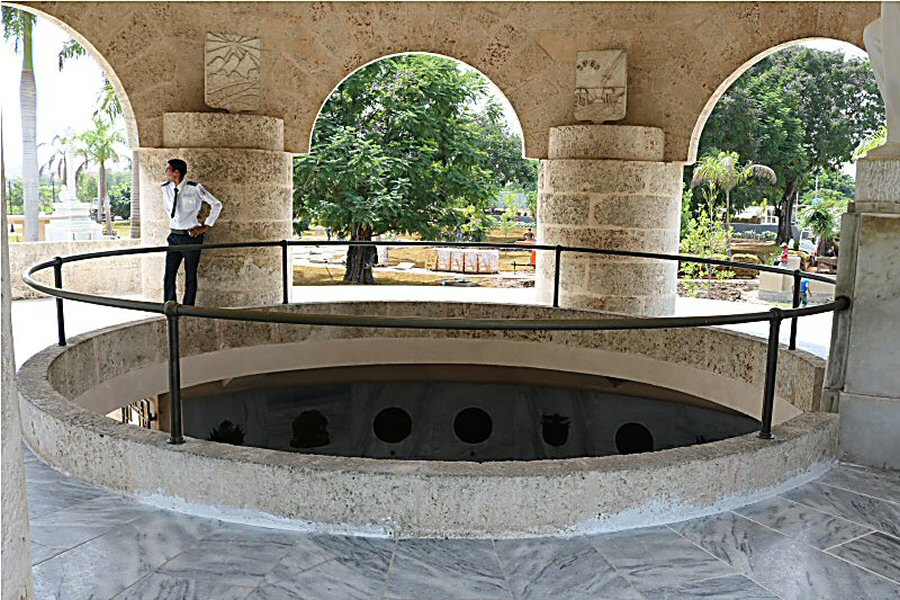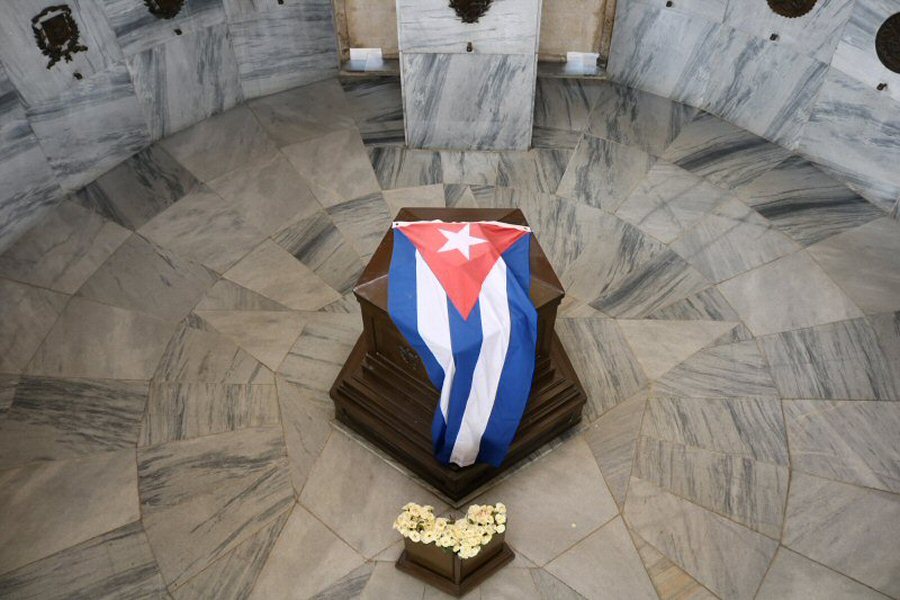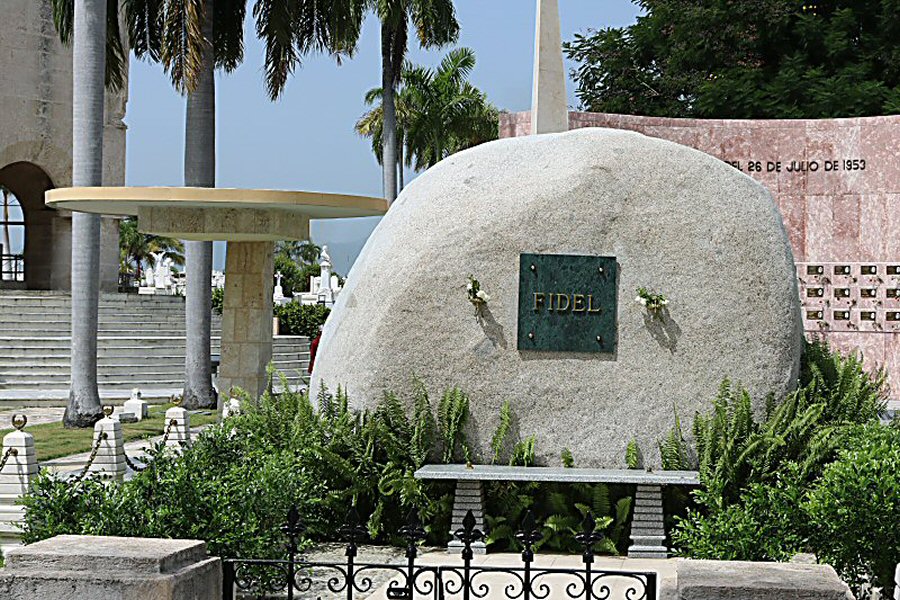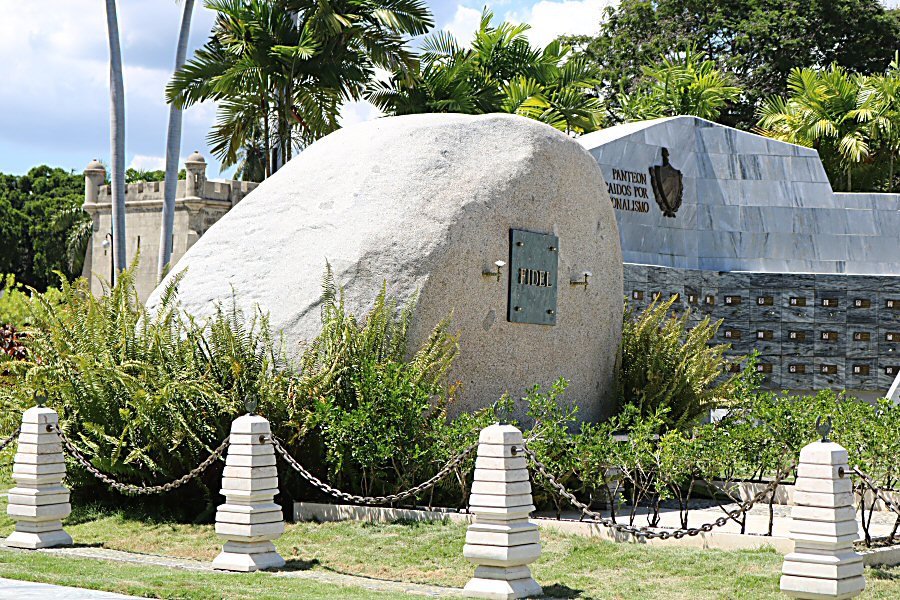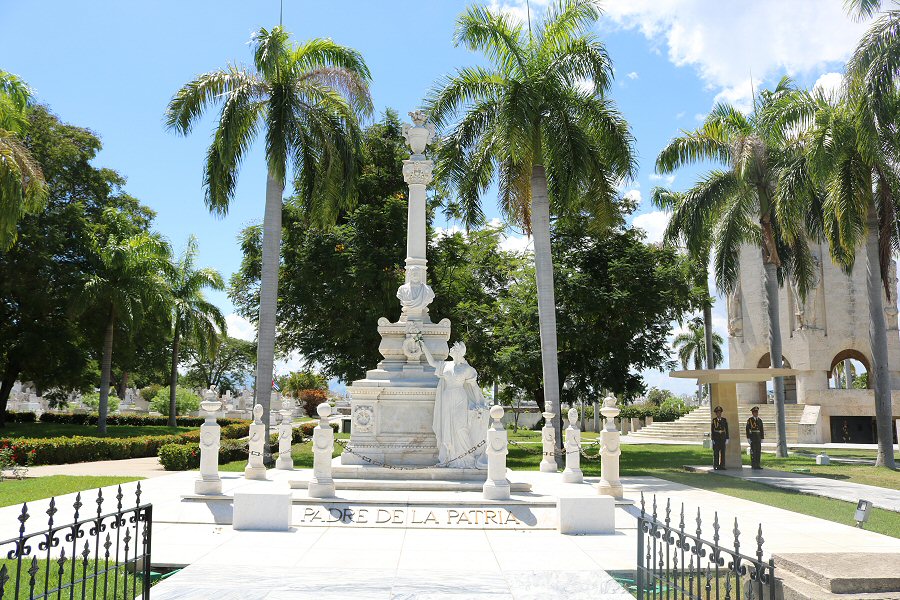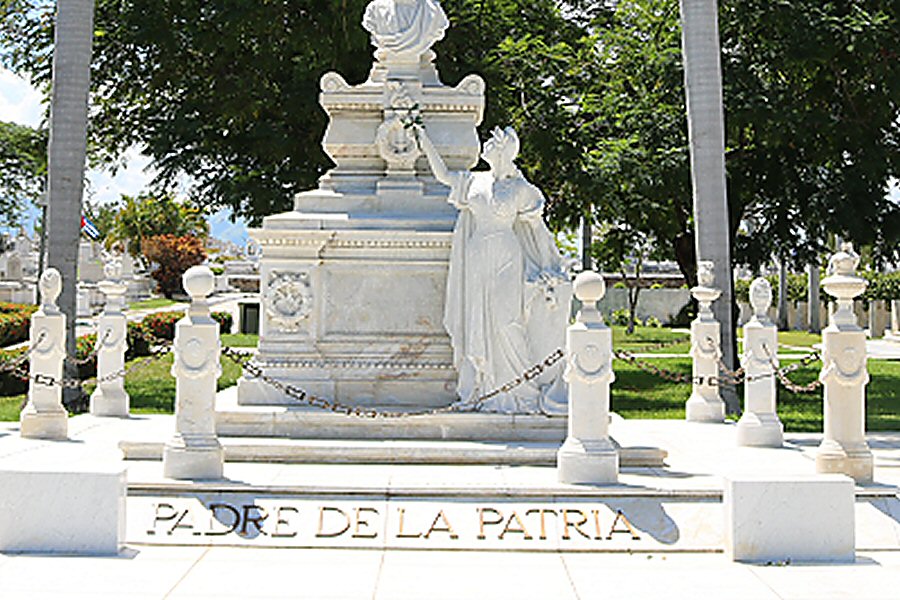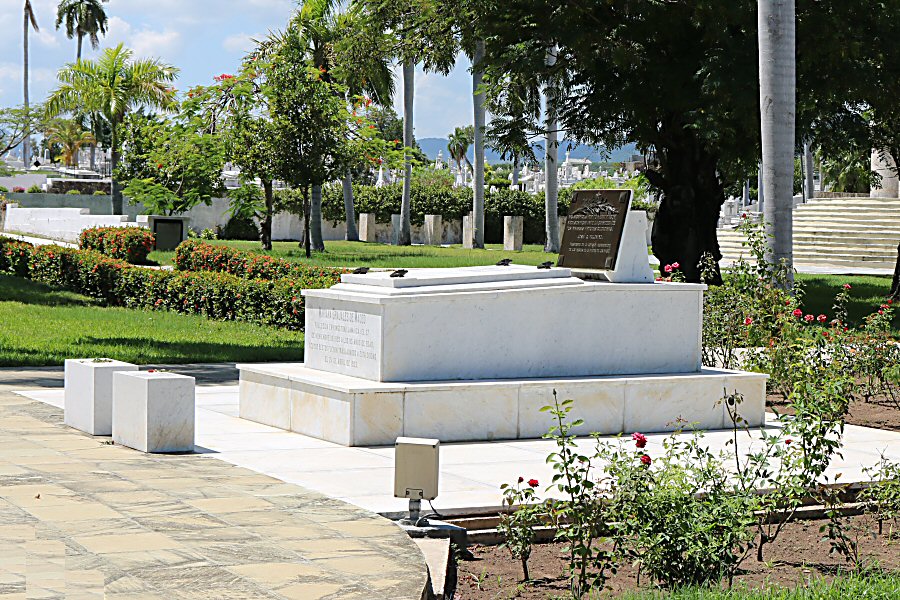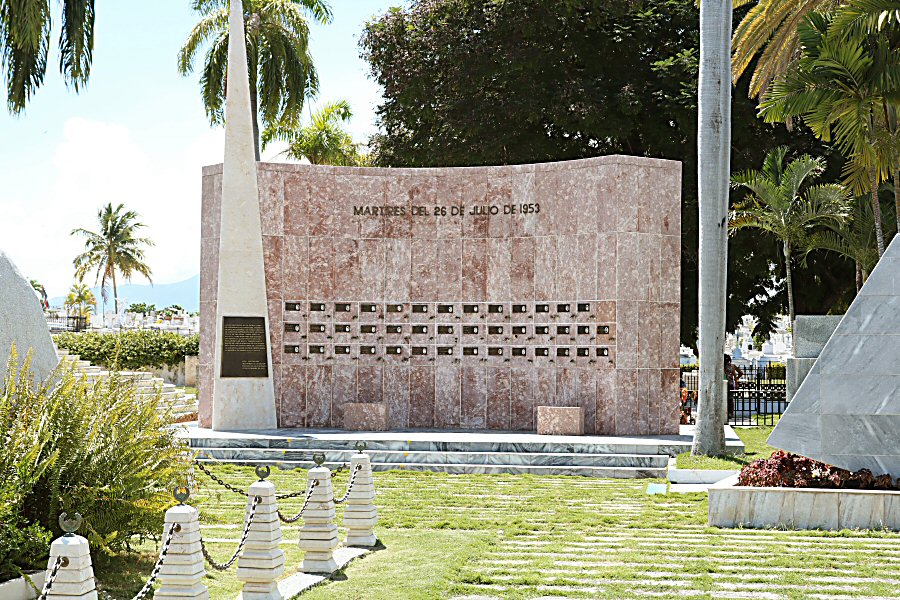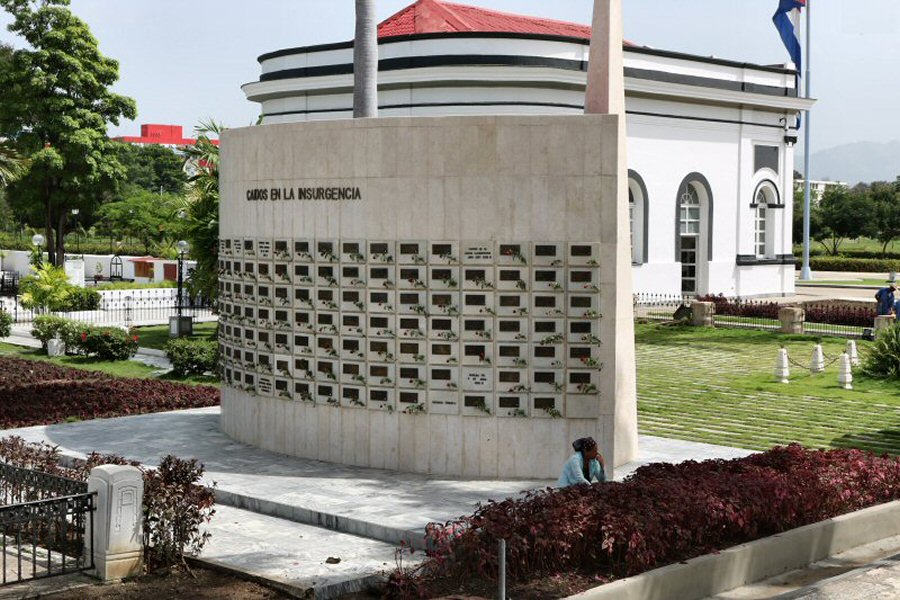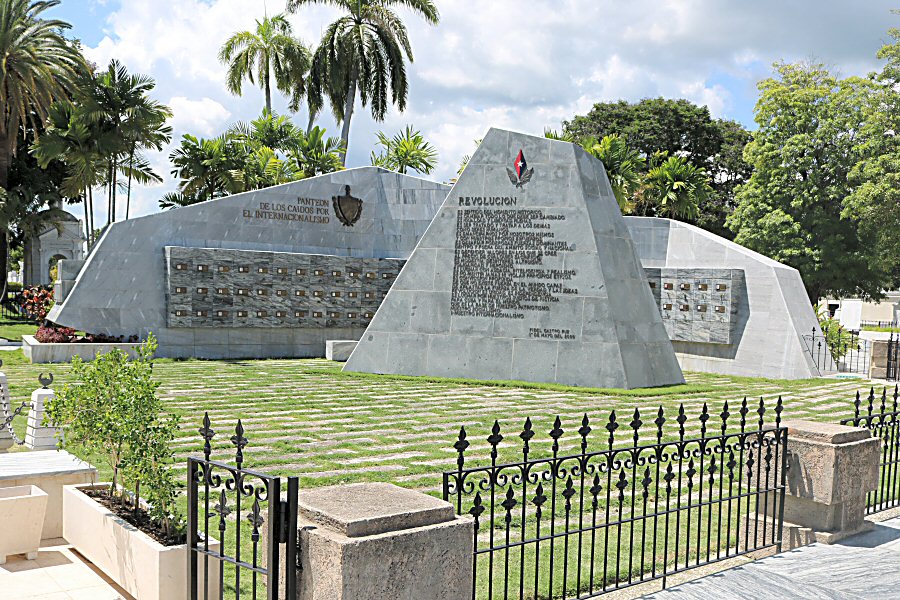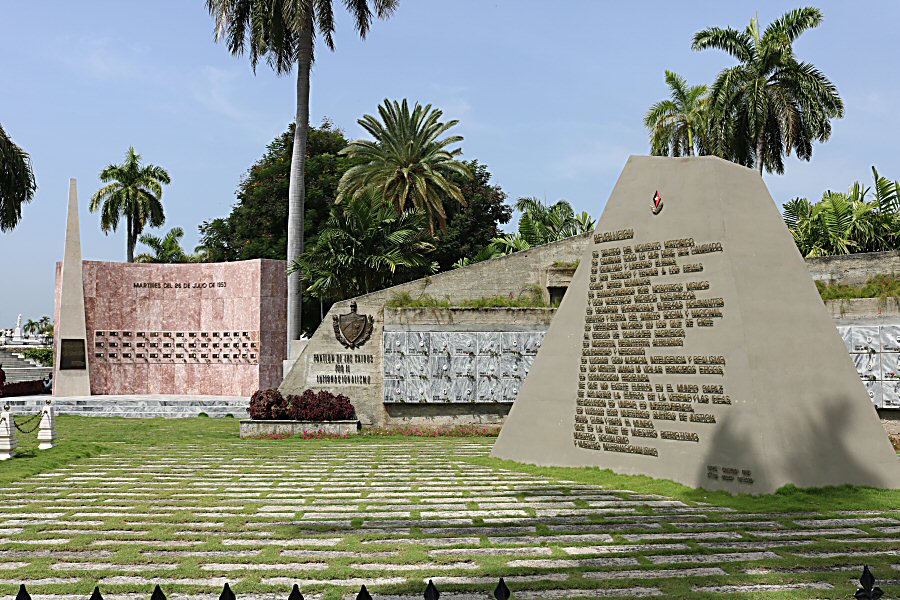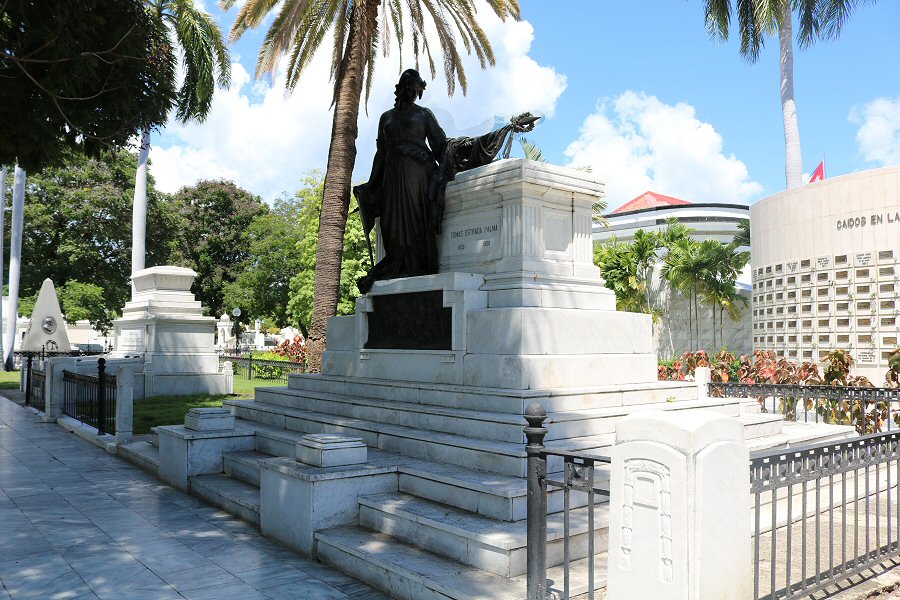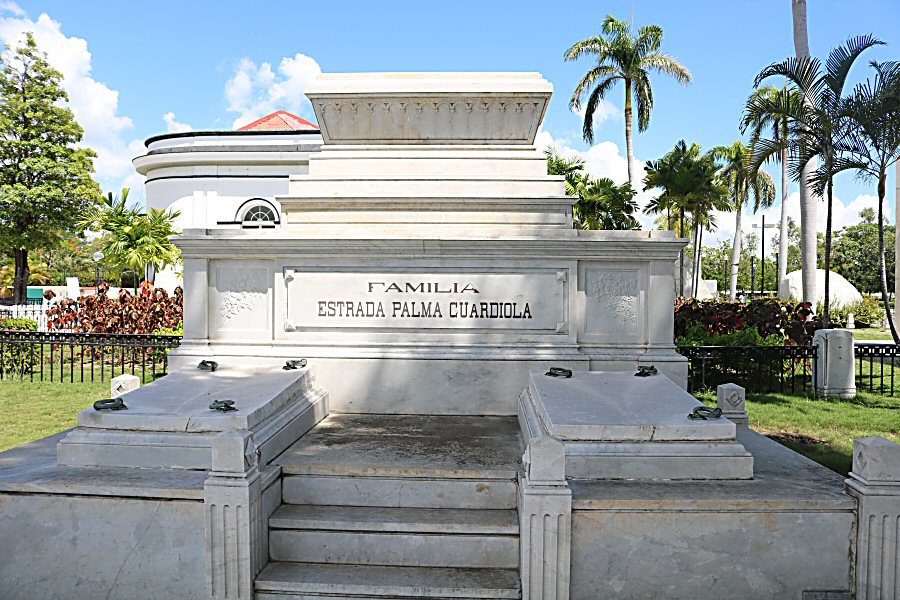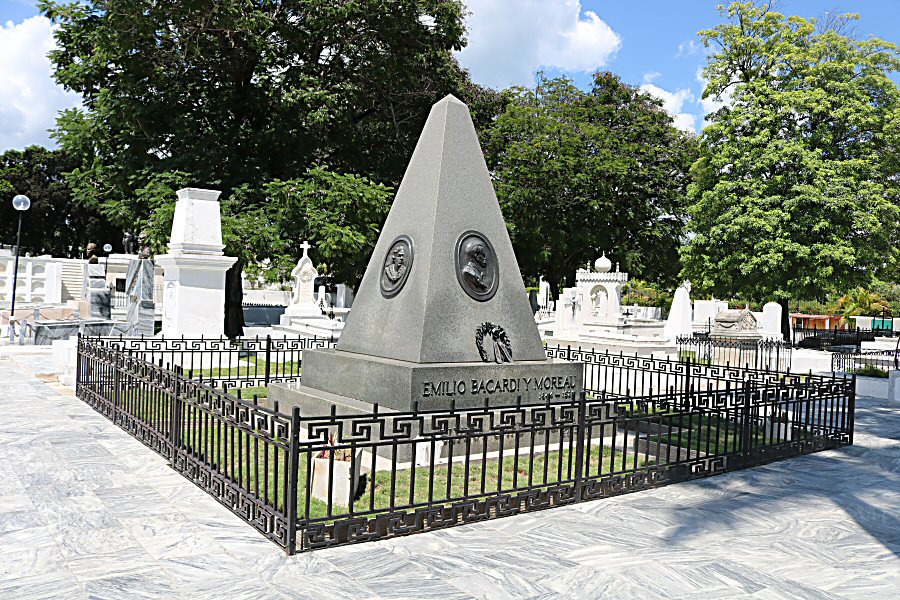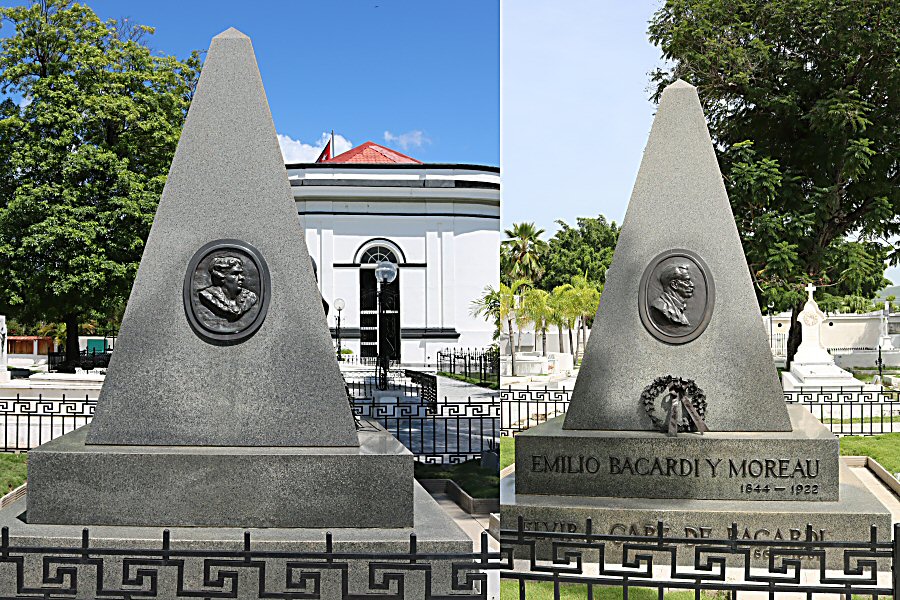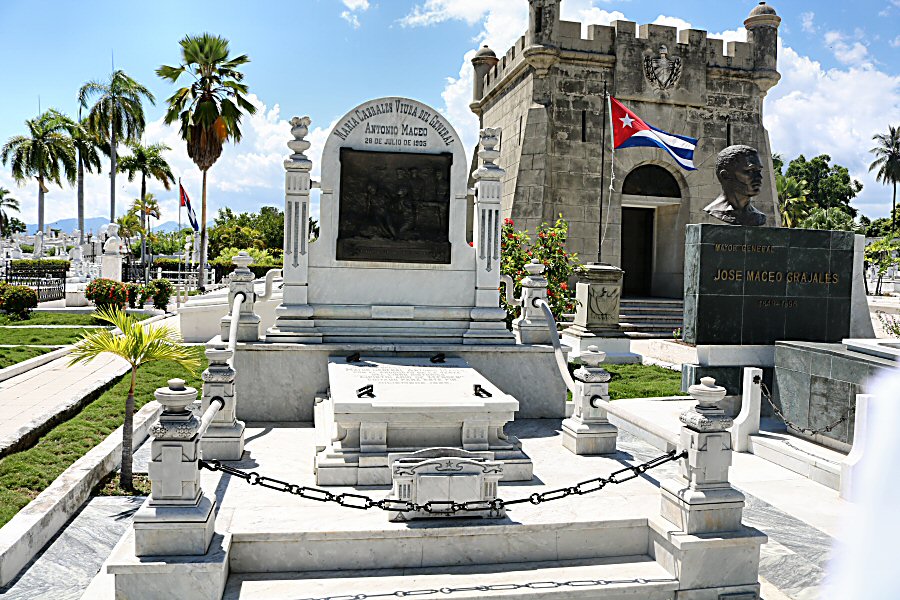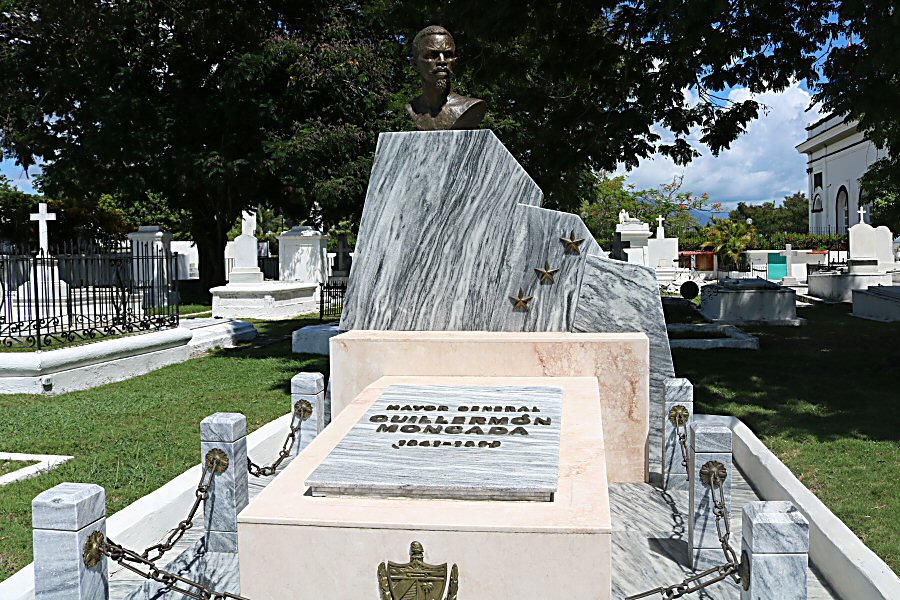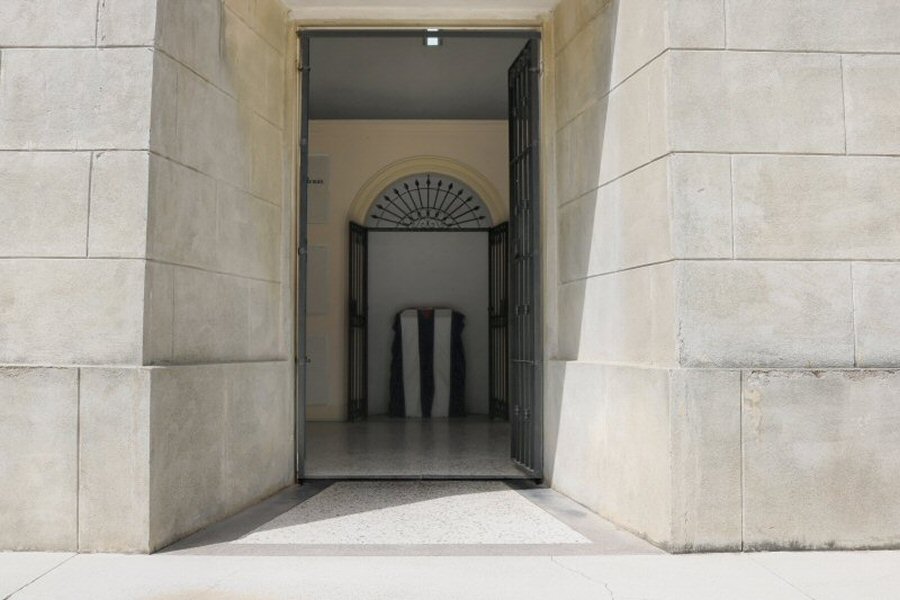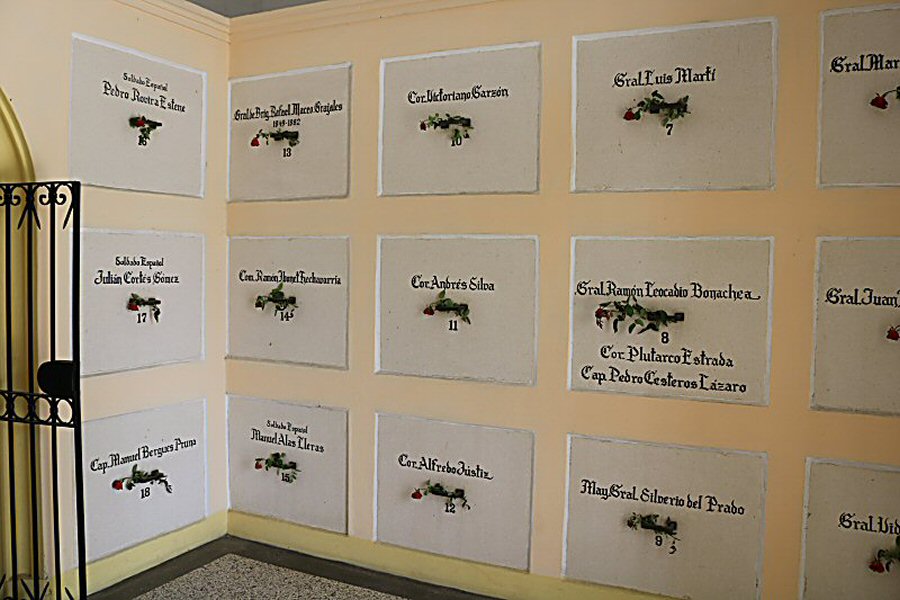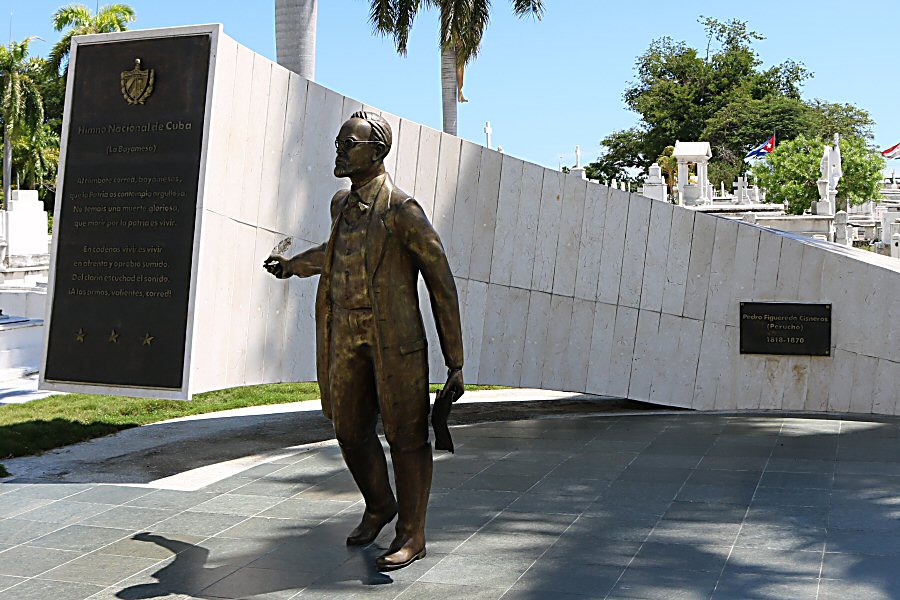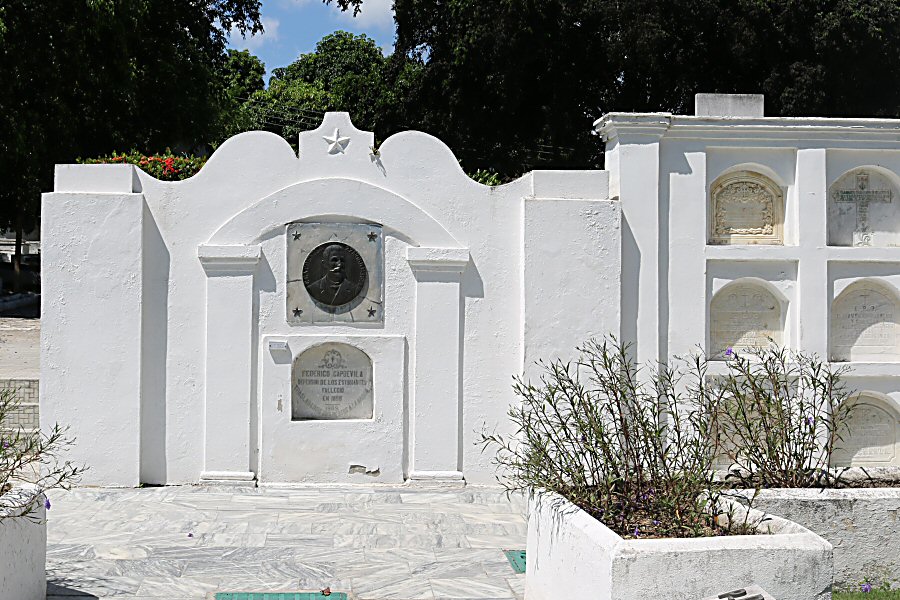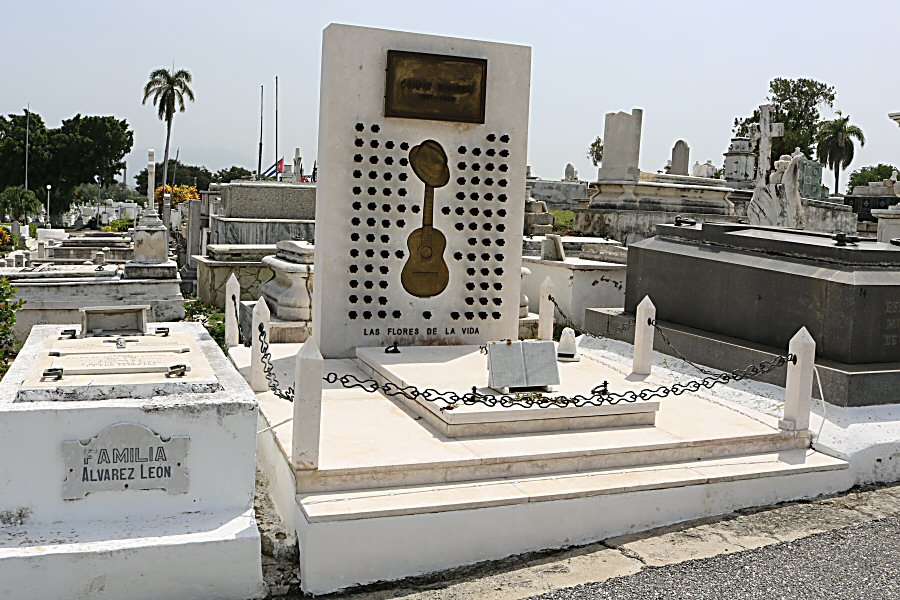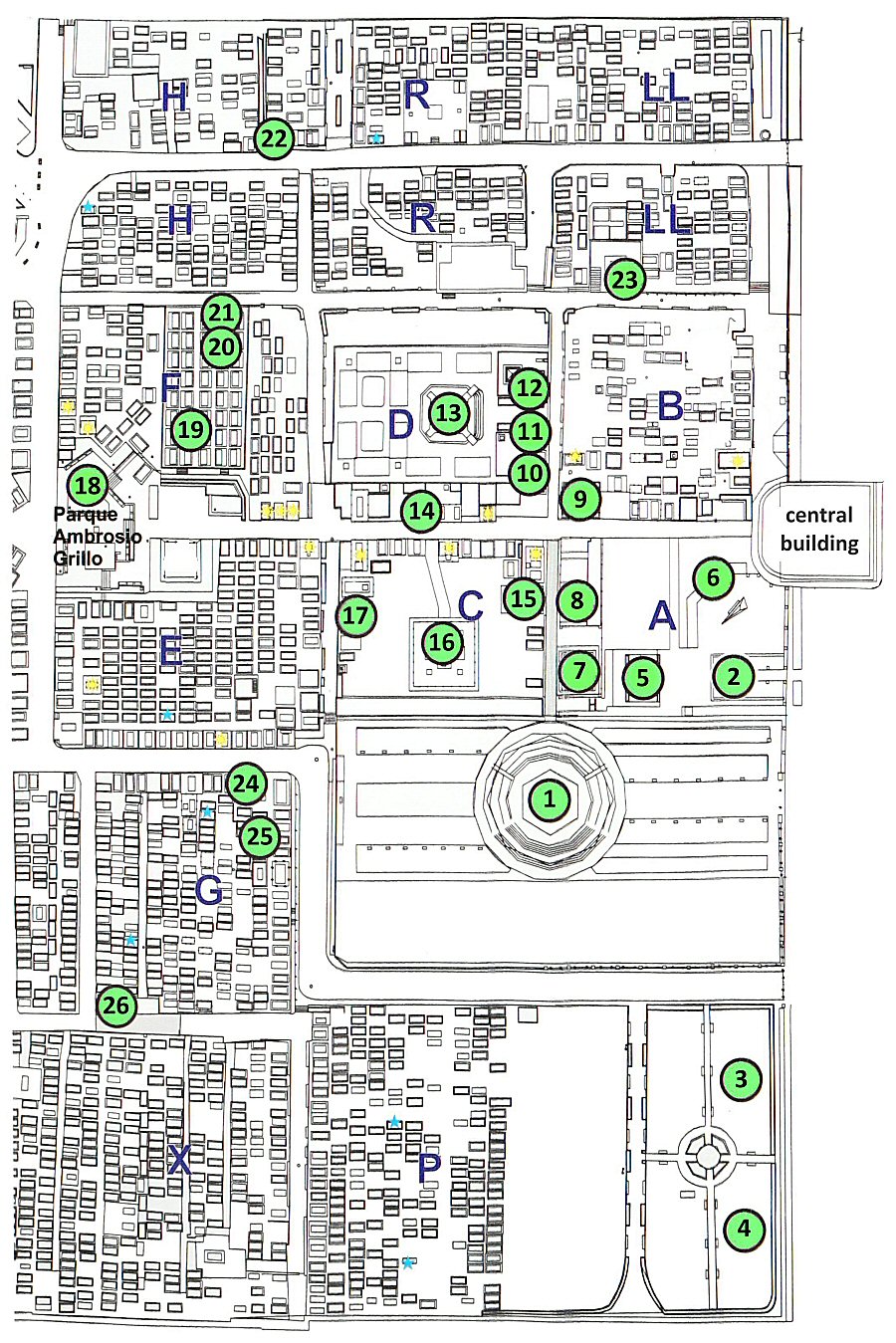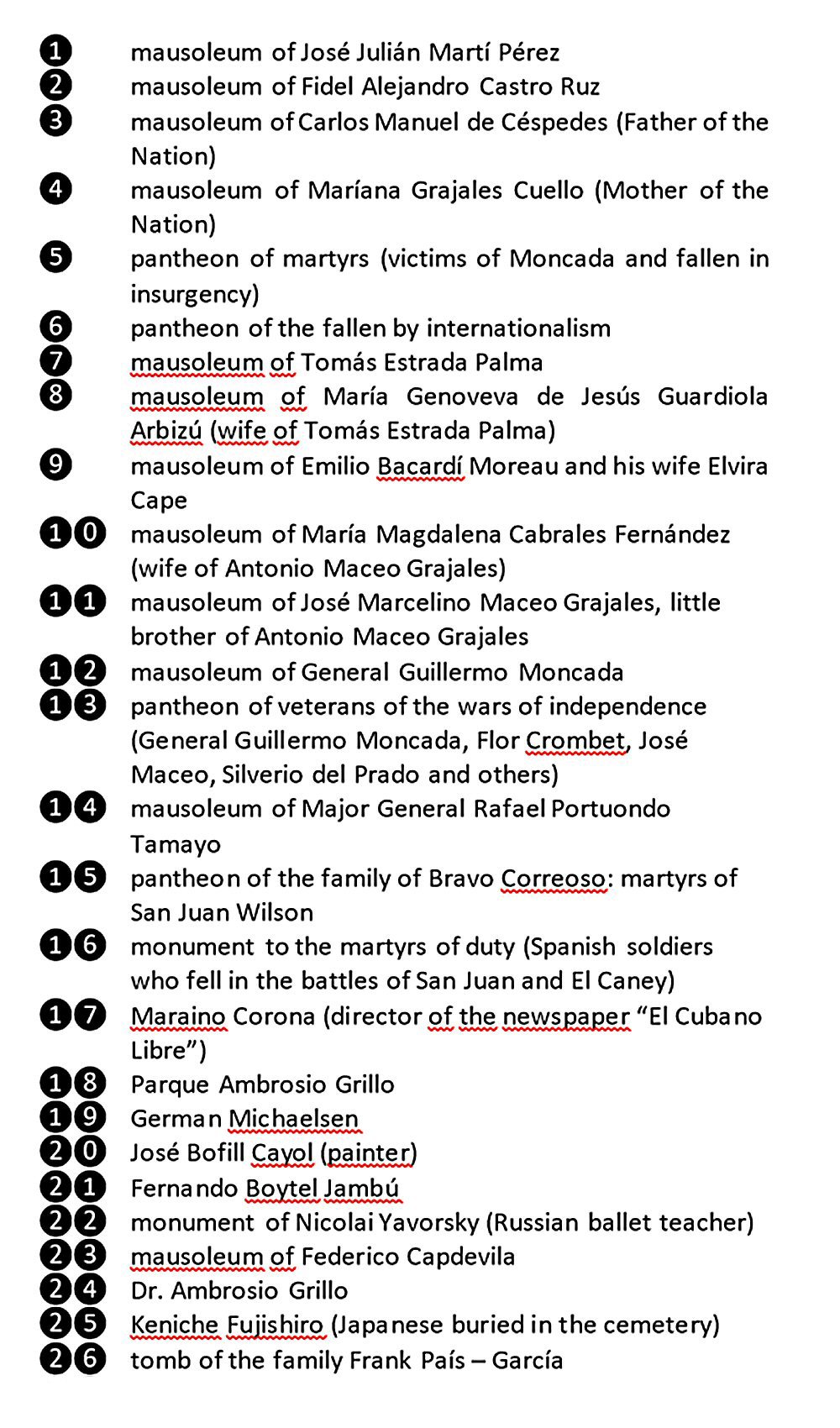
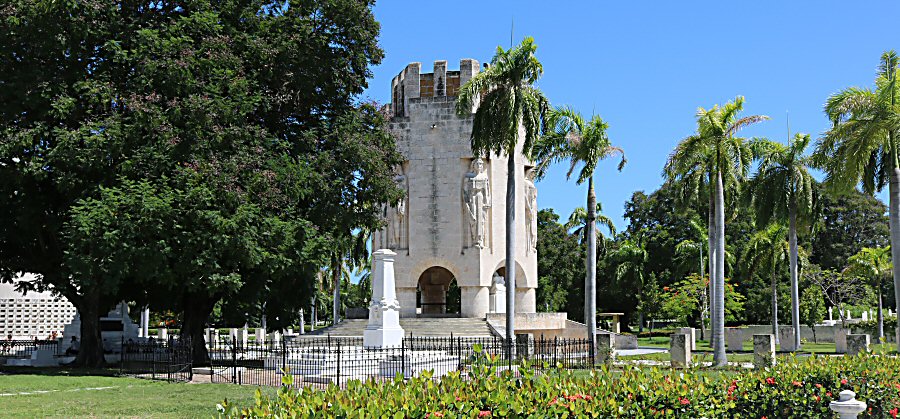
Many visitors come to pay homage to the national hero
José Martí at the quasi-religious mausoleum that was built in
1951. The mausoleum of José Martí Pérez is the most visited
place in the cemetery. It keeps the ashes of the Cuban national
hero that rest on a ground, consisting of a handful of soil
brought from every American country.
The imposing hexagonal structure dominates the
cemetery by its height of 24 meters. Its Romanesque architecture
is arranged in such a way that the sun rays lighten the crypt
that contains the wooden coffin through the skylights all day
long. The marble and granite construction with its unique
design, is guarded by three Cuban soldiers at the entrance that
perform a shift-changing ceremony every 30 minutes. The national
flag on his coffin and a bouquet of flowers in front of it
reminds us of hero’s maxim: "Yo quiero cuando me muera, sin
patria, pero sin amo, tener un mi losa un ramo de flores y una
bander / I want when I die, without a fatherland, but without a
master, have my slab a bouquet of flowers and a flag".
The ashes of the historical leader Fidel Castro Ruz,
after being transferred to Santiago de Cuba, were retained one
night in Plaza de la Revolución and then interred by a private
ceremony in this cemetery on December 4, 2016. The solemn
ceremony consisted of a 21-gun salute, and no speeches were done
according to his will. His simple monument in the form of an
enormous boulder bears a plaque with just the name Fidel. Behind
this plaque, Fidel Castro's ashes are in a wooden box in a
rectangular hole carved into the rock.
In 2017 the remains of Carlos Manuel de Céspedes,
Father of the Nation, and Mariana Grajales Coello, Mother of the
Nation, were interred in the central heritage area of Santa
Ifigenia Cemetery, where José Martí and Fidel Castro lie. The
main purpose was to bring the initiators of the liberation
movement together.
